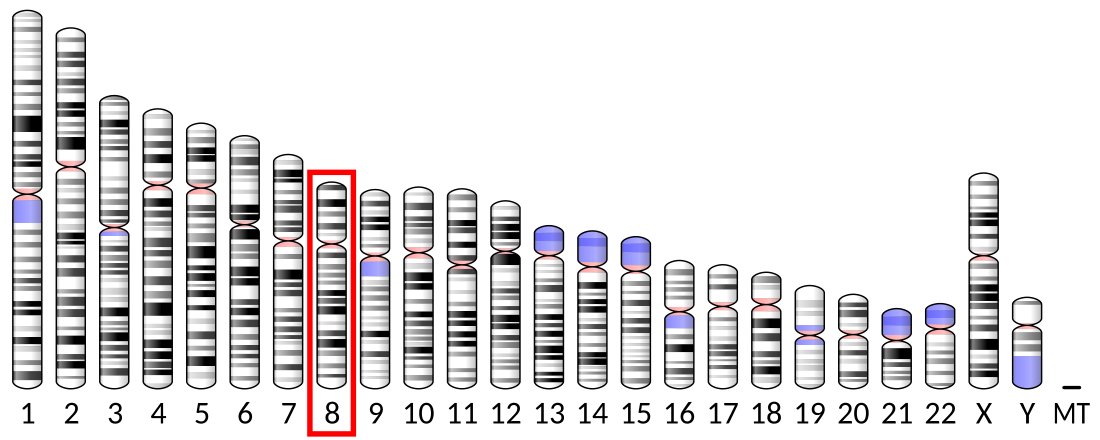Proenkephalin
Protein-coding gene in the species Homo sapiens From Wikipedia, the free encyclopedia
Proenkephalin (PENK), formerly known as proenkephalin A (since proenkephalin B was renamed prodynorphin), is an endogenous opioid polypeptide hormone which, via proteolyic cleavage, produces the enkephalin peptides met-enkephalin, and to a lesser extent, leu-enkephalin.[5] Upon cleavage, each proenkephalin peptide results in the generation of four copies of Met-enkephalin, two extended copies of met-enkephalin, and one copy of leu-enkephalin.[5] Contrarily, Leu-enkephalin is predominantly synthesized from prodynorphin, which produces three copies of it per cleavage, and no copies of Met-enkephalin. Other endogenous opioid peptides produced by proenkephalin include adrenorphin,[6] amidorphin,[7] BAM-18,[8] BAM-20P,[9] BAM-22P,[9] peptide B,[10] peptide E,[11] and peptide F.[12]
Clinical significance
Proenkephalin is produced by the medium spiny neurons of the striatum which undergo neurodegeneration in early stages of Huntington's disease (HD). PENK[13] and related peptides[14][15] measured in cerebrospinal fluid are proposed as potential biomarkers of disease progression in HD. Furthermore, PENK has been found associated with acute kidney injury[16] and glomerular filtration rate in steady-state and critically ill patients.[17][18]
See also
- Prodynorphin (Proenkephalin B)
- Proopiomelanocortin (POMC)
References
External links
Wikiwand - on
Seamless Wikipedia browsing. On steroids.




